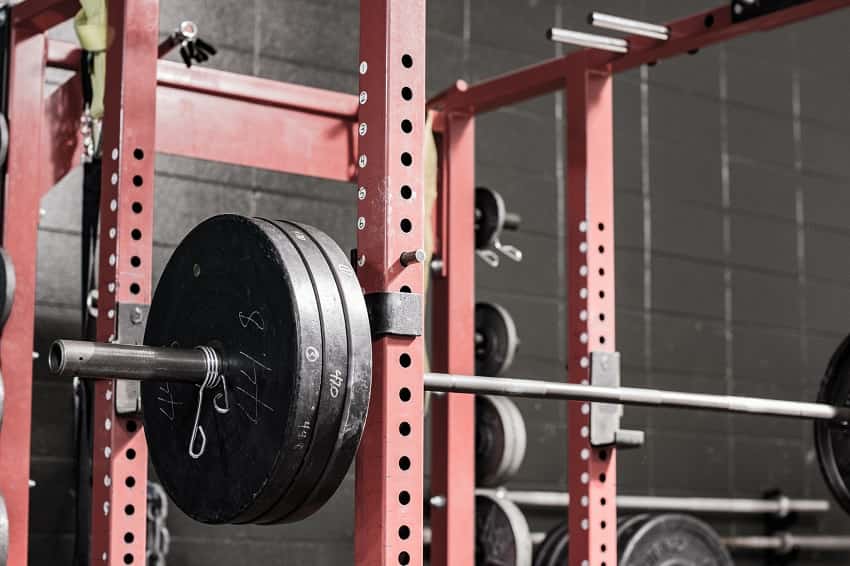
When it comes to neck-throttling speed and power we all want a little bit more of it. For athletes who specialize in fast twitch, explosive moments we can never quite get enough of it.
But where do we start?
Fortunately, we got Aaron Runner, MS, CSCS, and head coach at Full Stride Performance in Roswell, Georgia, to send over one of his favorite workout routines for developing power and strength in your lower body.
“I like to do this workout with some of my athletes weekly following jumps training and linear speed training,” says Runner. “There is no better way to build on sound sprinting mechanics than to follow it with strength and power lifts that transfer to speed development.”
While there is no age requirement for this workout (some of his more advanced 12 and unders perform it and routinely crush it), the athlete should have a good grip on the fundamentals of the clean, squat and hip-hinge mechanics.
Before getting started and jumping into the workout (ha!–see what I did there?), Runner advises refreshing on proper sequencing and weight distribution to avoid injury.
Let’s do this!
A Lower Body Power and Strength Workout for Sprint Athletes
Remember to always focus on the mechanics first, load second.
Heavy cleaning and squatting have zero transfer into athletics and the real world if your form is loose and sloppy.
A) Hang Power Clean (5 x 3)
B) Front Squat (5 x 5)
C1) RDL/ 1-Leg RDL (4 x 10, 4 x 8 L/R)
C2) Clean Grip Split Squat from floor (4 x 5 L/R)
D1) Planks (3 x 60 sec)
D2) 1-Arm Farmers Walks (3 x 25yds L/R)
Workout Notes:
- Hang Power Clean: Focus primarily on bar speed. Only add load if a high velocity can be maintained. Because of how I teach my jumps, it is more beneficial for my athletes to receive the bar in a power catch position to create stiffness and absorb forces quickly. The stiff athletic position of the power catch translates well to repeat jumps and various other athletic movements.
- RDL: Take care not to turn this into a Stiff-Legged Deadlift. Focus on proper hip-hinge mechanics so you can build from a position that will protect the hamstrings, rather than tear them to shreds. Load up your posterior chain by distributing the weight toward the back half of your foot. Keep a neutral spine by allowing your head to travel with your torso.
- Front Squat: Sit as low as good mechanics and mobility allows. This is where we get to build strength at weaker ranges of motion. Lower and raise through the heels. Maintain thoracic extension while protracting the shoulders and punch the elbows high to create a “shelf” for the bar to rest on. Brace the abdominals to protect against unnecessary lumber hyperextension and anterior pelvic tilt.
See also: Nail your squats and do them safely with our hand-picked collection of the best Olympic barbells for every kind of lifter.
- Clean-Grip Split Squat: Begin from the floor. The lift is centered around the front-most leg. Once, you’re in position, press down into the floor through the front heel while you raise and lower your body through the lift. Maintain a strong stable trunk. Once mastery is achieved, progress into a Rear Foot Elevated Split Squat. If you’re exhausted from holding the bar in this permission, loading the bar on the back is permissible as you adapt to the workout.
- Planks: If body weight is easily managed, add load by placing a bumper plate evenly between the lumbar and glutes. Keep adding weight to continue your progression, rather than holding the plank for additional time. Loaded planks will assist you in maintaining trunk stability in compound lifts such as the clean and squat. Regardless of load, focus on maintaining a neutral stable spine and pelvis by packing the shoulder blades and bracing your abdominals.
- 1-Arm Farmers Walks: Try to walk as tall and level as possible. Resist the weight but do not overcompensate by shifting your center of gravity too far away from the dumbbell. This is supposed to be extremely difficult for one side of the body at a time. Only carry as much load as you can while staying erect.
More Stuff Like This
6 Best Calf Raise Machines for Home Gyms. Develop stronger calves with a full rundown of the best calf raise machines for home gyms.
Best Ham and Glute Gliders. Build a stronger and more powerful posterior chain with this simple tool that can replace expensive GHD’s and barbell hip thrusts.